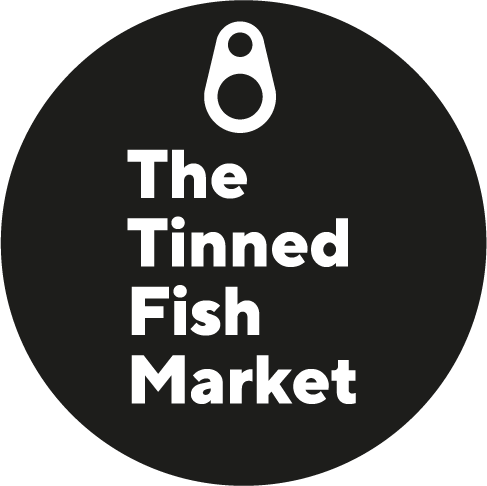Cantabrian anchovies 101
What are anchovies?
Anchovies are a small (five to six inches long on average) forage fish - like sardines. Larger fish like halibut, salmon and sharks feed on them. They belong to the family Engraulidae (Engraulis is Greek for anchovy), and, like sardines, the order Clupeiformes. There are 144 different species of anchovy. An oily fish that like temperate marine waters mostly, sometimes freshwater, anchovies are omnivores, feeding on plankton and newly hatched fish. They’re attracted to light, surfacing at night when the moon is bright. On nights when the moon isn’t full a 2000-year-old tradition can be employed where fishermen suspend a lamp from the front of small boats called lampara (Spanish for lamp) to attract the fish to the surface so that a ‘mother’ boat can net them. Before the advent of tech like sonar and radar and larger fishing boats, this was the method.
What is the difference between the anchovies we sell?
Yurrita anchovies are cured for 20 months, and are saltier than Olasagasti and Zallo anchovies - Zallo’s are the mildest salt-wise of the three ranges. Yurrita anchovies are great for cooking. Olasagasti’s are bigger fillets and look precision engineered; every hand-prepared fillet is the same size. The anchovy fillets also come in different flavoured olive oils. Olasagasti has a range packed in organic extra virgin olive oil. It’s fruity flavour plays really well off Espinaler’s tangy piparra peppers. Yurrita’s butterfly-prepared anchovies (a great canapé topper) come in a sweet Arbequina olive oil too.
Why are anchovies salty?
Tinned anchovies are prepared by hand then preserved in barrels filled with salt - a layer of salt, a layer of anchovies and so on. Because their flavour is short-lived after they’re caught, they are cured rather than exported. Our anchovy range includes Yurrita, Olasagasti and Zallo - Basque canneries that source the best anchovies from the morning seafood market and begin the curing process the same day. Zallo and Olasagasti anchovies are cured for a minimum of six to eight months, and Yurrita for at least 20. After curing, the salt is washed from them with water and brine. Then they are filleted, deboned and the skin removed (Yurrita leaves some skin on its butterfly-prepared ones) and packed in oil. Or in salt. Anchovies canned in salt mean home cooks and chefs get to follow tinned seafood tradition at home and fillet the anchovies themselves.
What are Cantabrian anchovies?
Cantabrian anchovies are European anchovies (Engraulis Encrasicolus), fished sustainably in the Bay of Biscay in the Cantabrian Sea. They are renowned for being the best anchovies out there, meaty and flavoursome, firm textured and packing a good oomph of umami. Why are Cantabrian anchovies so good? They are fished between early March and late June when they are at their peak. The curing process begins the day the anchovies are caught and the canning techniques - pioneered in the region over a century ago by Italians - are honed to perfection. Add to all this the quality Spanish olive oils the fillets are packed in and you get an idea of why Cantabrian anchovies are so sought after.
Are anchovies good for you?
Anchovies are full of tissue-repairing, muscle-building protein, and omega-3 fatty acids which promote heart health. They’re a good source of B vitamins niacin, riboflavin and vitamin B-12 (which help promote brain, eye and skin health). Anchovies also contain calcium, iron, zinc and omega-3 fatty acids.
How to eat anchovies
Anchovies have been popular for centuries. The Romans made garum - a fish sauce - from them (and tuna). They’re a flavour-enhancer in sauces too - a little (two or three fillets) goes a long way, because they’re umami-packed. As mentioned earlier, the salting traditions brought to Spain originated in Italy and there are plenty of Italian anchovy-based recipes. Spaghetti puttanesca: onion softened down in olive oil with chilli and garlic, mixed with olives, anchovies, capers and tomatoes and then tossed through spaghetti. Mozzarella in carrozza (mozzarella in a carriage): French toast wrapped around a mozzarella slice and two anchovy fillets, closed with a cocktail stick and deep fried. They’re in Provençal condiment tapenade: puréed black olives, capers (tapeno is the Provençal word for caper), garlic, lemon zest and the juice, and anchovies. In the Basque Country they’re skewered with an olive and a piparra or guindilla pepper to create the Gilda - named after Rita Hayworth’s salty, green and spicy character in the film of the same name. And here there’s Scotch woodcock. Like the rabbit-less Welsh rarebit - mustard, Worcestershire sauce and beer or stout infused cheese on toast - Scotch Woodcock is a misnomer. No woodcock, only anchovies and/or Gentleman’s Relish with scrambled eggs on buttered toast.
